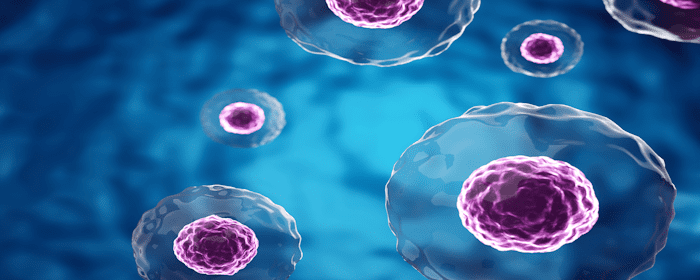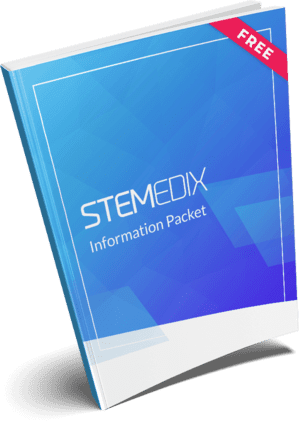Spinal cord injury (SCI) is one of the most serious outcomes of spinal trauma. It typically leads to either temporary or permanent loss of sensory, motor, and autonomic nerve functions below the affected area and can significantly impact a person’s quality of life. Worldwide, approximately 10.5 out of every 100,000 people experience SCI. While modern treatments enable 94% of individuals with acute traumatic SCI to survive, long-term survival is often compromised by complications arising after the injury.
In this review, Xia et al. explores the pathophysiological changes that occur following SCI and examines the mechanisms through which MSCs contribute to treatment. The authors also summarize the potential clinical applications of MSCs while addressing the challenges associated with their use and discussing future prospects.
Current Treatment Approaches For SCI
Current therapies for SCI focus on managing the immediate effects of the injury. Standard treatments include stabilizing the spine, surgically decompressing the spinal canal, and initiating rehabilitation programs. These approaches aim to reduce further damage and create conditions that support natural healing processes. However, they do not actively promote the regeneration of damaged nerve cells. The primary goal is to restore neurological function as quickly as possible after addressing the spinal cord compression. Unfortunately, no existing treatment strategies can fully repair damaged nerve cells, leaving an unmet need for innovative therapies.
Primary Spinal Cord Injury
Primary SCI results from direct trauma, such as fractures or dislocations of the vertebrae, which can compress, tear, or even sever the spinal cord. Spinal cord compression is the most common form of primary injury and is often accompanied by damage to blood vessels and the blood-spinal cord barrier (BSCB). The BSCB is a critical structure that maintains the stability and health of the spinal cord by keeping harmful substances out. When the BSCB is compromised, inflammatory molecules and toxic substances infiltrate the injured area, worsening the damage.
Secondary Spinal Cord Injury
Secondary SCI involves a series of biological processes that start within minutes of the initial injury. These changes occur in three overlapping phases: acute (within 48 hours), subacute (48 hours to two weeks), and chronic (lasting up to six months). Secondary injuries can exacerbate the damage caused by the primary injury and often lead to permanent complications.
One of the first effects of secondary SCI is the disruption of the blood supply to the spinal cord, which causes further cell death. As spinal cord cells are destroyed, they release molecules that trigger inflammation. This inflammatory response attracts immune cells to the injury site, which, in turn, release substances that cause additional damage. Neutrophils, a type of immune cell, arrive within an hour of injury and persist for several days, contributing to the worsening of the injury by releasing harmful substances like reactive oxygen species.
The Role of Mesenchymal Stem Cells in SCI
In recent years, mesenchymal stem cells (MSCs) have emerged as a promising option for treating SCI. MSCs are a type of stem cell capable of self-renewal and differentiation into various cell types, making them suitable for tissue repair and regeneration. These cells can be derived from multiple sources, including bone marrow, fat tissue, umbilical cords, and amniotic fluid. MSCs are relatively easy to isolate and store, and their use does not raise significant ethical concerns.
Types of MSCs
The three main types of MSCs used in clinical practice are bone marrow-derived MSCs (BMSCs), adipose-derived MSCs (AD-MSCs), and human umbilical cord-derived MSCs (HUC-MSCs). Each type has unique advantages:
- BMSCs: These cells can differentiate into various tissue types, such as bone, cartilage, and nerve cells. They are effective at reducing inflammation and releasing factors that support nerve regeneration.
- AD-MSCs: Sourced from fat tissue, these cells are easier to obtain in large quantities without causing significant harm. They promote angiogenesis (the formation of new blood vessels) and wound healing by releasing growth factors and other molecules.
- HUC-MSCs: These cells have the highest capacity for proliferation and differentiation. They are smaller in size, allowing them to pass through the BSCB more easily, and they do not pose a risk of fat or vascular embolism.
How MSCs Assist in Treatment of SCI
According to the authors, MSCs offer multiple benefits for SCI treatment, including:
- Immunomodulation: MSCs regulate the immune response at the injury site by interacting with immune cells and releasing anti-inflammatory molecules. This helps reduce inflammation, which is a key factor in secondary injury.
- Neuroprotection and Regeneration: MSCs release neurotrophic factors, such as nerve growth factor (NGF) and brain-derived neurotrophic factor (BDNF), which promote the survival and regeneration of nerve cells. They also inhibit glial scarring, a process that can block nerve regeneration.
- Angiogenesis: MSCs secrete vascular endothelial growth factor (VEGF) and other molecules that encourage the formation of new blood vessels. This improves blood flow to the injured area and helps restore the damaged BSCB.
- Exosome Production: MSCs release exosomes, small vesicles that carry proteins and genetic material to the injury site. These exosomes play a crucial role in reducing inflammation, promoting cell repair, and improving overall tissue recovery.
Future Directions
MSC therapy holds significant promise for improving outcomes in SCI patients. Preclinical studies have demonstrated the ability of MSCs to restore motor function in animal models. In clinical settings, MSCs have shown potential in improving sensory and motor function and aiding bladder control in patients with SCI. However, further research is needed to refine the therapy and address existing challenges.
Mesenchymal Stem Cells: A Promising Path for Spinal Cord Injury Treatment
SCI is a complex condition with devastating consequences for those affected. Current treatments aim to stabilize the injury and create conditions for natural healing but fall short of promoting nerve regeneration. MSCs offer a new avenue for SCI treatment by reducing inflammation, supporting nerve cell regeneration, and improving blood flow to the injured area. While challenges remain, the authors conclude that the advancements in MSC research suggest a bright future for their use in SCI therapy. With continued investigation, MSCs has the potential to become a cornerstone of regenerative medicine for SCI patients.
Source: Xia Y, Zhu J, Yang R, Wang H, Li Y, Fu C. Mesenchymal stem cells in the treatment of spinal cord injury: Mechanisms, current advances and future challenges. Front Immunol. 2023 Feb 24;14:1141601. doi: 10.3389/fimmu.2023.1141601. PMID: 36911700; PMCID: PMC9999104.


 St. Petersburg, Florida
St. Petersburg, Florida
